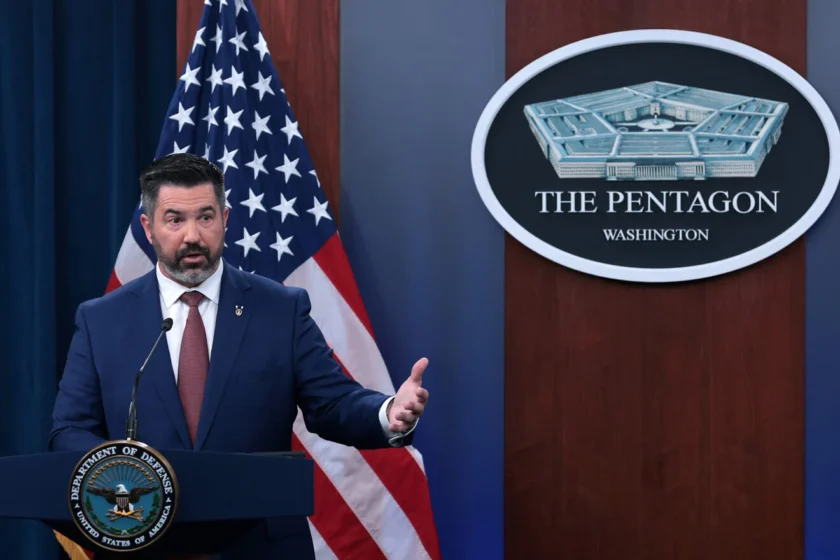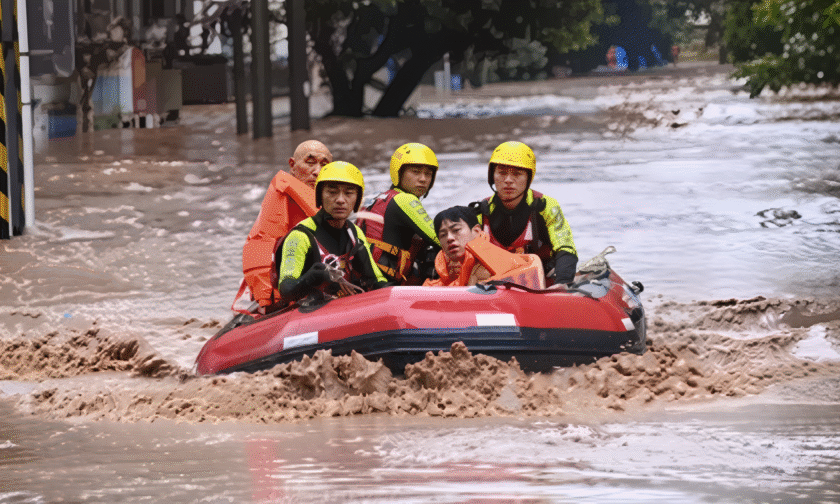New Delhi: The relationship between India and the United States has undergone significant transformation over the past few decades, evolving from Cold War-era suspicion to a robust strategic partnership. This shift is driven by changing geopolitical realities, shared interests in countering China’s rise, and a mutual commitment to a rules-based international order. However, the partnership is not without its challenges, as differing priorities, historical ties with other nations, and domestic pressures in both countries create friction. Let’s explore the key dynamics shaping Indo-US relations as of April 2025, focusing on cooperation, challenges, and the broader geopolitical context.
Historical Context: From Estrangement to Engagement
During the Cold War, Indo-US relations were marked by distrust. India’s non-aligned stance and close ties with the Soviet Union clashed with the US’s alliance with Pakistan, particularly evident during the 1971 Indo-Pakistani War when the US deployed the USS Enterprise to the Bay of Bengal in a show of support for Pakistan. The dissolution of the Soviet Union in 1991 marked a turning point, as India began to adapt to a unipolar world and gradually warmed to the US. The 2005 Indo-US Civil Nuclear Agreement was a landmark, signaling a new era of trust and cooperation, despite India’s refusal to sign the Nuclear Non-Proliferation Treaty.
Current State: A Strategic Partnership
As of April 2025, Indo-US relations are at a high point, underpinned by shared democratic values and converging strategic interests. The US sees India as a critical partner in the Indo-Pacific to counterbalance China’s growing influence, while India benefits from US technology, investment, and diplomatic support to bolster its global standing. Key areas of cooperation include:
Defense and Security: The US has designated India as a Major Defense Partner, facilitating advanced technology transfers and joint military exercises like Malabar (with Japan and Australia). Foundational agreements like the Basic Exchange and Cooperation Agreement (BECA) enable intelligence sharing, enhancing India’s military capabilities, particularly in precision strikes. Recent reports indicate high-level US visits, including Vice President JD Vance and Defense Secretary Hegseth, to discuss potential F-35A sales, reflecting deepening defense ties.
Technology and Innovation: The US-India Initiative on Critical and Emerging Technologies (iCET), launched in 2023, fosters collaboration in AI, quantum computing, semiconductors, and space. India’s signing of the Artemis Accords in 2023 and plans for a joint mission to the International Space Station in 2024 highlight space cooperation. The NASA-ISRO Synthetic Aperture Radar (NISAR) mission, launched in 2024, exemplifies this partnership, mapping Earth’s resources using advanced radar technology.
Economic Ties: The US is India’s largest trading partner, with bilateral trade exceeding $120 billion annually. US companies have invested nearly $60 billion in India, while Indian firms have poured $40 billion into the US, creating jobs and fostering innovation. The Indian diaspora, numbering over four million in the US, acts as a bridge, strengthening cultural and economic ties.
Indo-Pacific Strategy: Both nations are committed to a free and open Indo-Pacific, collaborating through the Quad (with Japan and Australia) to ensure maritime security and counter China’s assertiveness. The US supports India’s leadership in the Indian Ocean Rim Association (IORA) and initiatives like the International Solar Alliance, which the US joined in 2021.
Geopolitical Drivers: Countering China and Beyond
The primary driver of closer Indo-US ties is the shared concern over China’s rise. China’s aggressive actions—along the Line of Actual Control (LAC) with India, in the South China Sea, and through its Belt and Road Initiative—have pushed India and the US to align more closely. The 2020 Galwan Valley clash, which killed 20 Indian soldiers, underscored the need for India to bolster its military capabilities, often with US support. The US, meanwhile, views India as a linchpin in its Indo-Pacific strategy, with experts like Harsh V. Pant noting India’s role in maintaining a stable balance of power against China’s “onslaught.”
Beyond China, both nations share interests in counterterrorism, energy security, and climate change. The US has supported India’s efforts to blacklist Pakistan-based terrorists like Masood Azhar, though its reluctance to pressure Pakistan more forcefully remains a point of contention. On climate, the US and India co-lead initiatives like the Coalition for Disaster Resilient Infrastructure (CDRI), with the US Agency for International Development (USAID) playing a key role.
Challenges and Points of Friction
Despite the upward trajectory, Indo-US relations face several challenges:

India’s Strategic Autonomy: India’s historical non-alignment and commitment to strategic autonomy create tensions. India’s continued defense ties with Russia, including the purchase of the S-400 missile system, have irritated the US, leading to discussions about the Countering America’s Adversaries Through Sanctions Act (CAATSA). India’s decision to increase oil imports from Russia, especially after the 2022 Ukraine conflict, further complicates matters, as the US pushes for Western sanctions compliance.
Differing Priorities on China: While both nations aim to counter China, their approaches differ. India is wary of being drawn into a US-led “containment” strategy, preferring a more balanced approach that avoids direct confrontation. This is evident in India’s reluctance to fully align with US policies in the Indo-Pacific, as it seeks to maintain economic ties with China and avoid escalation along the LAC. The recent India-China border agreement in 2024, restoring pre-2020 patrolling arrangements, was partly influenced by strained Indo-US trust, as some analysts suggest China saw an opportunity to pull India away from the US orbit.
Trade and Economic Disputes: Trade tensions persist, with issues like tariffs, intellectual property rights, and market access barriers straining relations. The US has recently pressured India on multiple fronts—imposing tariffs, raising concerns over drug abuse, and critiquing India’s religious freedom record—prompting some Indian observers to note “unprecedented pressure” from Washington.
US-Pakistan Dynamics: The US’s continued engagement with Pakistan, including a $450 million F-16 sustainment package in 2022, frustrates India, which sees Pakistan as a sponsor of terrorism. The US’s “soft approach” toward Pakistan-based terror groups like Lashkar-e-Taiba limits deeper counterterrorism cooperation.
Domestic Pressures: In the US, the Trump administration’s pro-India policy team, as noted by analysts on platforms like X, gives India leverage, but potential shifts in US leadership could alter priorities. In India, domestic sentiment often pushes back against perceived US “arm-twisting,” especially on issues like Iran sanctions, where India’s energy needs clash with US policy.
The Broader Geopolitical Context
The changing dynamics of Indo-US relations are deeply tied to global power shifts. The rise of a multipolar world, with assertive players like China and Russia, has forced both nations to recalibrate their strategies. The US’s partial withdrawal from certain regions has increased India’s strategic importance, particularly in the Indo-Pacific, where India’s location and growing naval power make it a vital partner. However, the US’s historical “divide-and-rule” approach in Asia—exploiting India-China tensions—has backfired to some extent, as deteriorating Indo-US trust in 2024 encouraged China to resolve border issues with India, potentially weakening the US’s containment strategy.
India’s improving ties with China, if sustained, could reshape regional dynamics, creating an Asia-centric world order that challenges US dominance. This possibility is a concern for the US, as a Sino-Indian rapprochement could unlock significant economic and strategic potential, accelerating the transition to a multipolar world. Meanwhile, India’s role in forums like BRICS and the Shanghai Cooperation Organization, which exclude the US, underscores its balancing act between East and West.
Public Sentiment and People-to-People Ties
Public perception in both countries remains largely positive. Gallup polls from 2023 show 70% of Americans view India favorably, a trend that has held steady since 2015. In India, a 2021 Morning Consult poll found 79% of Indians viewed the US favorably, reflecting strong people-to-people ties. The Indian diaspora in the US, a vibrant community of over four million, plays a crucial role in fostering goodwill, influencing policy, and driving economic collaboration.
Looking Ahead: Opportunities and Risks
The Indo-US partnership is at a critical juncture. On one hand, opportunities abound—deepening defense ties, expanding tech collaboration, and strengthening the Quad could solidify their strategic alignment. High-level visits in 2025, including those by US officials like JD Vance and Mike Waltz, signal continued momentum. On the other hand, risks loom large. India’s delicate balancing act with Russia and China, coupled with US domestic policy shifts, could strain the relationship. Trade disputes and differing approaches to regional stability, particularly in South Asia, will require careful navigation.
To sustain this partnership, both nations must prioritize mutual trust over unilateral demands. The US should offer tangible incentives, such as advanced technology transfers (e.g., jet engines), to deepen India’s commitment, while India must clarify its strategic priorities without compromising its autonomy. As the global order continues to shift, the Indo-US relationship will remain a cornerstone of stability in the Indo-Pacific—but only if both sides can bridge their differences and align their visions for a multipolar world.





